Asymmetric Marketing in PlayStation Home
Unscrew the locks from the doors!
Unscrew the doors themselves from their jambs!
–Whitman
PlayStation Home has an interesting problem.
There’s too much to do.
I know, I know — that sounds backwards, right? Isn’t the classic complaint about Home that it has too little to offer? I mean, unless you’re into bowling, Saucer Pop or spontaneous running-man trains there’s just nothing to do in Home…
Wake up. That was five years ago. PlayStation Home has evolved so far beyond those early days that one could be forgiven for thinking it’s a new program that uses the old Home’s basic architecture as its foundation. And aside from some jaded neckbeard hipsters who clamor that Home “isn’t what it used to be” (read: “I don’t feel special any more”), it’s hard to argue with just how much entertainment Home offers now, despite its shortcomings and flaws.
 Today, Home has a very different problem. One that’s growing increasingly worse: there might just be too much being offered.
Today, Home has a very different problem. One that’s growing increasingly worse: there might just be too much being offered.
This isn’t a direct problem for the consumer, necessarily. But it does pose a real challenge for developers. Gone are the days when any new commodity was a big deal; gone are the days when a new piece of virtual clothing was released into Home and you saw everyone wearing it. There was a time when you could reasonably keep track of Home’s entire library of virtual commodities, and you knew exactly what was coming out every week; today, by contrast, it’s very easy to overlook something, even if it’s a high-quality commodity worth owning.
Two recent examples, just to point out how fierce the competition for the spotlight is today:
 1. Bigyama’s last product release — their furniture bundle — contains some really lovely pieces which people ought to own. Eighteen months ago, there would have been much more hoopla over this; however, it was released on the same exact week as VEEMEE’s No Man’s Land, a monster of a game which eclipsed…well, everything else that came out that week (and produced the best traffic numbers we’ve seen here at HSM all year). Now, sure, that may not be a fair comparison — a furniture bundle versus a huge game — but the point is twofold: that it seems like every week there’s a huge avalanche of content, and that a new Home developer fighting for the spotlight today has a much more uphill battle than in years past.
1. Bigyama’s last product release — their furniture bundle — contains some really lovely pieces which people ought to own. Eighteen months ago, there would have been much more hoopla over this; however, it was released on the same exact week as VEEMEE’s No Man’s Land, a monster of a game which eclipsed…well, everything else that came out that week (and produced the best traffic numbers we’ve seen here at HSM all year). Now, sure, that may not be a fair comparison — a furniture bundle versus a huge game — but the point is twofold: that it seems like every week there’s a huge avalanche of content, and that a new Home developer fighting for the spotlight today has a much more uphill battle than in years past.
2. Lockwood’s PODI versus nDreams’ Blueprint. PODI is one of the coolest virtual items ever released into Home, and almost certainly was developed as a reaction to the user feedback provided in response to the original fireworks bundle Lockwood released. PODI, under what constituted “normal” circumstances not too long ago, would have received top billing in most Home commodity discussions. But it was announced at the same time as nDreams’ Blueprint:Home project, which is an absolute game-changer for personal estates. While both of these developers have massive built-in audiences with years of brand loyalty, it does illustrate an interesting point: in a sea of knives, the gun is the winner. In a sea of guns, the bomb is the winner. But when everyone starts dropping bombs, you damned well better have one of two things: a better bomb delivery system, or something seriously nuclear. Preferably both.
 There have been a lot of bombs dropped in Home this year. A lot. Home Tycoon. Mercia. Portable EOD. No Man’s Land. Blueprint. Minibots Battlebox. Cutthroats. These are all major, major events. In years past, any one of these would have stolen the show for at least two fiscal quarters. Remember when it seemed like the only decent game to play in Home was SodiumOne (which, by the way, still holds up today)? And then, holy bleep, there’s another full-scale game called Novus Prime? By contrast, all of the items I just listed have either been announced or already deployed into Home — and the year’s only half over. What’s really scary is that there’s more stuff coming for Home later this year — really, properly big stuff that hasn’t been announced yet — which is going to carpet-bomb Home like a B-52.
There have been a lot of bombs dropped in Home this year. A lot. Home Tycoon. Mercia. Portable EOD. No Man’s Land. Blueprint. Minibots Battlebox. Cutthroats. These are all major, major events. In years past, any one of these would have stolen the show for at least two fiscal quarters. Remember when it seemed like the only decent game to play in Home was SodiumOne (which, by the way, still holds up today)? And then, holy bleep, there’s another full-scale game called Novus Prime? By contrast, all of the items I just listed have either been announced or already deployed into Home — and the year’s only half over. What’s really scary is that there’s more stuff coming for Home later this year — really, properly big stuff that hasn’t been announced yet — which is going to carpet-bomb Home like a B-52.
The other interesting thing to point out: in case you haven’t noticed it, a lot of the really big stuff isn’t coming from SCEA any more. Home is becoming a platform for third-party developers to shine. And the catch is that you’ve got a lot of developers all competing for the consumer’s dollar now: Lockwood, LOOT, nDreams, Hellfire, Digital Leisure, Midway, Juggernaut, Mass Media, Heavy Water…the list goes on at length.
 So here’s the challenge. The PlayStation Blog constitutes one source of marketing (and, to be fair, a really, really big one). But it’s one source, and maintaining brand awareness for new commodities can be a real challenge in such a crowded marketplace. The second challenge is that no developer can drop a Tsar Bomb every single week; while really big releases generate their own buzz, that still leaves a lot of interim content which needs to be promoted. Let’s discuss possible means of asymmetric marketing — and examples thereof — which might get the job done effectively.
So here’s the challenge. The PlayStation Blog constitutes one source of marketing (and, to be fair, a really, really big one). But it’s one source, and maintaining brand awareness for new commodities can be a real challenge in such a crowded marketplace. The second challenge is that no developer can drop a Tsar Bomb every single week; while really big releases generate their own buzz, that still leaves a lot of interim content which needs to be promoted. Let’s discuss possible means of asymmetric marketing — and examples thereof — which might get the job done effectively.
Examples of asymmetric marketing in PlayStation Home:
1. The Lockwood Horsebomb
With such a plethora of commodities being released every single week into Home, making something stand out can be a real challenge. And this is why Lockwood’s horsebomb marketing campaign was (and is) so brilliant: it created a hot commodity out of something which serves utterly no purpose whatsoever.
Think about it: how do you take an unpainted, non-interactive piece of virtual furniture and turn it into a hot, must-have commodity? You let loose with some incredibly clever marketing and community outreach.
It started with some non-sequitur imagery during a Drey clothing campaign. Typical Drey marketing images involve young, pouty people dressed in incredibly trendy clothing. And then the horse appeared in the background. Why?
 Lockwood didn’t even make a big deal out of it at first. They slowly teased it on Twitter and elsewhere, but didn’t try to explain what the story was with the horse. And it was brilliant. By making the horse a non-sequitur and not explaining things, it became a subject of fascination and speculation. As the actual launch of the horse got closer, Lockwood announced a community event to go with it: a challenge to come up with interesting or outlandish photos of the horse in different settings.
Lockwood didn’t even make a big deal out of it at first. They slowly teased it on Twitter and elsewhere, but didn’t try to explain what the story was with the horse. And it was brilliant. By making the horse a non-sequitur and not explaining things, it became a subject of fascination and speculation. As the actual launch of the horse got closer, Lockwood announced a community event to go with it: a challenge to come up with interesting or outlandish photos of the horse in different settings.
The contest had no prizes, other than inclusion in Lockwood’s Facebook album. And it didn’t need any. By galvanizing the community to be creative, Lockwood was able to bring significant brand awareness to an item that otherwise might have gone completely unnoticed. The sheer absurdity of a “horsebomb” made it a cool commodity rather than something relegated to the dustbin.
The lesson here is simple: it is not enough to simply create a commodity and push it through the necessary approvals to get it into Home. Nor is it enough to rely solely on official coverage from Sony. At best, this is a flavor-of-the-moment strategy that is no longer viable in an environment where so much content is being delivered. Instead, it is important to build a mystique around something, and engage the community’s creative minds in supporting it.
 How did Euro RSCG manage to sell a cheap cerveza? They built an ad campaign around a Hemingway-esque character who doesn’t drink beer and doesn’t seem to overtly care much about selling you something or not. They sold the lifestyle association, not the product itself. And thus Dos Equis became a household name.
How did Euro RSCG manage to sell a cheap cerveza? They built an ad campaign around a Hemingway-esque character who doesn’t drink beer and doesn’t seem to overtly care much about selling you something or not. They sold the lifestyle association, not the product itself. And thus Dos Equis became a household name.
Obviously, given the sheer amount of content a developer might release into Home every week, it’s not possible to give each individual piece the same sort of in-depth treatment. But it is possible to do more than just throw together a few lines of PR copy and hope enough people can put themselves in the picture. Good advertising puts the consumer in the picture for them, and there is a significant lack of this in Home.
2. Digital Leisure’s Hotel Room
A while ago, a good friend of mine suggested what I thought was a brilliant marketing tactic: burn a building down.
Think about the buzz it would generate. Imagine hearing, “Did you SEE what’s going on at the Sportswalk?” from a friend, and then navigating there out of curiosity and seeing one of the buildings on fire. No explanation from Sony. No marketing PR. Nothing. Let the community do the work.
The end result: whatever attraction Sony had placed in that space would receive a hell of a lot more traffic. And more traffic translates into an increased probability for more revenue.
In order to make this concept work, there would be cost incurred to program the destruction of the building (which should burn for a few days), the charred hulk left behind (a week or two), the construction scaffolding for a new structure in progress (also a couple of weeks) and whatever new structure would replace it – unless it simply reverted to the original structure.
 The idea here is indirect promotion: promote the setting around the target commodity (whatever it may happen to be), not the commodity itself. And this can be a surprisingly effective means of marketing, because it – again – doesn’t take on the appearance of marketing. We live in an ad-saturated culture, and effective marketing involves going after the consumer in ways not necessarily anticipated.
The idea here is indirect promotion: promote the setting around the target commodity (whatever it may happen to be), not the commodity itself. And this can be a surprisingly effective means of marketing, because it – again – doesn’t take on the appearance of marketing. We live in an ad-saturated culture, and effective marketing involves going after the consumer in ways not necessarily anticipated.
One developer has taken this concept and really run with it: Digital Leisure.
When the Casino was first launched, Digital Leisure gave everyone who showed up a free personal estate – the “comped” hotel room. And it generated a fair amount of discussion on its own, as it wasn’t a typical estate; it’s small, cramped, and looks like something out of a Silent Hill.
But what was truly ingenious was what Digital Leisure did with it.
Remember the first time you saw your hotel room flooded? Remember the surprise and discussion it generated? And Digital Leisure’s only formal response was to treat it as an “in world” event – apologizing for the inconvenience, using the typical banal verbiage one has read a million times for such actual events in the past.
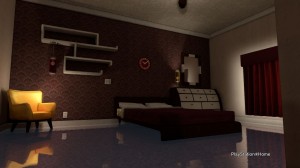 That was it. No further explanation.
That was it. No further explanation.
And the consumer base loved it. After all, who wouldn’t? Home’s greatest enemy is how static it can feel, and nearly any time a developer goes back and updates a piece of their own content, it’s welcomed with open arms. Particularly as this was a free estate, expectations were fairly low. Who the hell goes back and messes with a free estate, considering the cost required to do so?
A really smart developer, that’s who.
Digital Leisure cleverly promoted the Casino by not promoting the Casino. After all, in Home, every developer promotes their own attractions. And when you’ve got a whole lot of people doing the same thing, it creates a lot of noise that’s hard to sift through. But when you do something different – something asymmetric – it gains attention.
Digital Leisure has continued to milk this tactic to great effect: after flooding the hotel room, they proceeded to give it a mold problem and then ransack it. Each time, it’s generated buzz from the community, and it’s created a sly in-joke between developer and consumer: pay attention to us, because we care enough to entertain you.
 Has the increased traffic brought by this tactic translated into increased revenue? Well, there’s no way to know for certain unless Digital Leisure wants to comment on that question, but if Sony’s sales lists are any indicator, they’re probably making a pretty decent return off their marketing strategy.
Has the increased traffic brought by this tactic translated into increased revenue? Well, there’s no way to know for certain unless Digital Leisure wants to comment on that question, but if Sony’s sales lists are any indicator, they’re probably making a pretty decent return off their marketing strategy.
What’s great about this marketing tactic is that it can easily be translated by other developers. Yes, there’s a cost factor to change a personal estate or public space, but there is some truth to the aphorism of spending money to make money. The key is knowing how to spend it in order to generate maximum ROIC.
3. LOOT’s podcasts
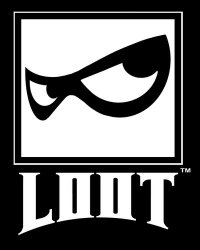 Ever listen to an audio commentary track on a DVD? How much did it vastly improve your enjoyment of that experience? How much more connected did you feel?
Ever listen to an audio commentary track on a DVD? How much did it vastly improve your enjoyment of that experience? How much more connected did you feel?
Why don’t more developers have a podcast series? It seems like such a natural, effective and low-cost means of conveying information, entertainment and a brand’s ethos to the audience. Consumers already engaged with a particular brand will eat it up, and it’s a great external method of delivering a precisely controlled message. Granted, LOOT’s podcast has a significant advantage in that they could put it up on their own EOD system and thus place it in Home itself, but that doesn’t mean that other developers couldn’t implement their own podcast series.
Consider the advantage of a developer podcast. You can share whatever information you want, in precisely the verbiage you choose, and disguise it as entertainment. Further, it creates greater familiarity between consumer and developer, which helps promote brand awareness as well as brand loyalty. In a virtual society which is faceless and anonymous, a developer which makes itself “real” to its consumer can establish a perception of being engaged with the consumer base and caring about their feedback, as opposed to simply a faceless entity churning out content to hit a target number on a spreadsheet.
While regular videocast series may be time-prohibitive to produce on a regular basis, podcasting is comparably easy. And those consumers who are sufficiently engaged with a developer to sit through an episode may often themselves become informal brand ambassadors to their friends, given the human desire to want to gain an ego boost via sharing hard-to-find information.
4. Public showcase spaces
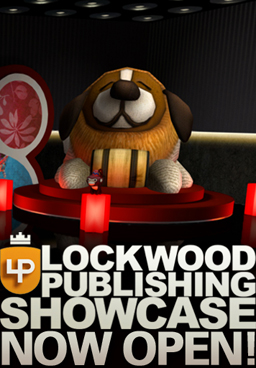 This is an example of asymmetric marketing gone mainstream within Home.
This is an example of asymmetric marketing gone mainstream within Home.
When the Lockwood Showcase was deployed into Home, a friend of mine asked me why such a thing would be created. After all, one could just go to the Mall (and, later, the Navigator) to purchase Lockwood commodities, right? Why sink the money into building what amounted to little more than a glorified commerce point? Would it really pull any traffic numbers?
Except that the Lockwood Showcase was (and is) an absolutely brilliant concept. Because, when you’re selling a virtual commodity, what are you really selling? You’re selling the experience. For absolutely every type of virtual commodity except a game, what you are really selling the user is a method of enhancing his ability to deepen the social interaction of Home in some way. The consumer doesn’t buy a chair just to buy a chair; they’re buying a chair because it enhances an estate which was decorated in a specific way to convey a user-to-user experience.
In my personal view, this is where Sony miscalculated the core appeal of Home, and – conversely – it’s what Lockwood figured out very quickly, which propelled them into the prominent position they now hold with the consumer base.
The Lockwood Showcase is a masterstroke. When you go to the Lockwood Showcase, you are able to enjoy a true virtual mall experience, not just a 3D commerce point. Think about an actual shopping mall; when you step into a Banana Republic, that’s a very specifically-designed experience with emotional and psychological triggers built in for the target audience. It’s a very different feel than, say, a Dunhill store.
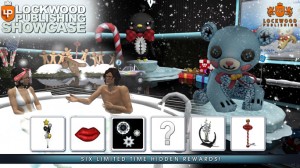 Home’s mall never offered this. So Lockwood, by building their own store, was able to build more than just a store: they built a direct message to the consumer which says, “This is our brand experience, and this is how you should feel when you enjoy it.” It creates an emotional connection between developer, commodity and consumer. Going to the old mall was an exercise in drudgery – hence why the process was eventually streamlined to the point where the mall itself became redundant – whereas going to a developer showcase is, frankly, a lot of fun. Particularly in the case of Lockwood, where their showcase actually has multiple zones with different lighting and music cues to promote the different collections under the Lockwood umbrella.
Home’s mall never offered this. So Lockwood, by building their own store, was able to build more than just a store: they built a direct message to the consumer which says, “This is our brand experience, and this is how you should feel when you enjoy it.” It creates an emotional connection between developer, commodity and consumer. Going to the old mall was an exercise in drudgery – hence why the process was eventually streamlined to the point where the mall itself became redundant – whereas going to a developer showcase is, frankly, a lot of fun. Particularly in the case of Lockwood, where their showcase actually has multiple zones with different lighting and music cues to promote the different collections under the Lockwood umbrella.
There’s another, subtler psychological benefit to building a public showcase: it says to the consumer, “We cared enough to spend the money necessary to build this for you to enjoy, rather than just trying to sell stuff through the generic Navigator menu.” It creates a delineation point between third-party developers: you’re either big enough to be able to build and stock your own showcase space, or you should be working towards it.
 LOOT and nDreams have also constructed prominent public showcases: the Space Station and Aurora, respectively. The LOOT Space Station contains a free Entertainment On Demand theatre, which has got to be one of the biggest non-gaming traffic draws in all of Home. And instead of this theatre selling you popcorn and Red Vines outside, it sells you LOOT goodies. LOOT’s even taken this one step further recently, with the Stage Set open house – where the consumer is able to interact with the virtual item and get a sense of its scale before purchasing it.
LOOT and nDreams have also constructed prominent public showcases: the Space Station and Aurora, respectively. The LOOT Space Station contains a free Entertainment On Demand theatre, which has got to be one of the biggest non-gaming traffic draws in all of Home. And instead of this theatre selling you popcorn and Red Vines outside, it sells you LOOT goodies. LOOT’s even taken this one step further recently, with the Stage Set open house – where the consumer is able to interact with the virtual item and get a sense of its scale before purchasing it.
And nDreams’ Aurora? It’s a masterpiece. By making Aurora a sort of magic-realism fantasy world, they encapsulated the overall experience the company sells in Home. But the really brilliant touch is that they built a very fun game – OrbRunner – into the space, with a very exclusive prize (the Champion Apartment) which would take months of constant gameplay to acquire. As a result, the game became an excuse to continuously visit the showcase, and made Aurora feel like a world within a world – the first such space in Home to do so since Lockwood’s Sodium Hub.
 In particular, the fact that nDreams periodically updates the scenery and has narrative elements which hint at a deeper backstory for the in-world environment are tantalizing touches which, although they represent an additional cost, make the experience around the commerce point feel more dynamic.
In particular, the fact that nDreams periodically updates the scenery and has narrative elements which hint at a deeper backstory for the in-world environment are tantalizing touches which, although they represent an additional cost, make the experience around the commerce point feel more dynamic.
There’s a final benefit to public developer showcases which merits discussion: although it initially was a form of asymmetric marketing, it may at this point frankly be a near-necessity. Home has been absolutely flooded with content over the last year, to the point where the consumer base may frankly be a bit numb. Personal estates haven’t hit the top-ten sales lists in a while. Virtual clothing barely registers. Companions occasionally pop up, but are gone just as fast. And with so much content coming in, the engaged consumer is effectively drinking from a firehose.
The problem with this is that with so much content, it’s easy for things to get lost in the shuffle. The Home consumer has been conditioned to enjoy the latest flavor of the week, and I suspect any type of commodity really only has about a fortnight of public consciousness to recover its development costs and sell in any appreciable numbers. There will always be a few exceptions, of course, that are evergreen and sell themselves (LOOT’s portable EOD is one such commodity), but those are the exceptions to the rule.
So if you’re a Home developer trying to maintain some semblance of visibility for commodities that aren’t the flavor of the week, you really can’t rely on Sony to provide enough marketing support for it, because there’s simply too much content, coming in at too rapid a pace, all fighting for that one central spotlight.
Example. I recently wanted to visit the Xi Museum. Do you know how many menus, sub-menus, directories and clicks I had to blindly sift through just to find the damned thing? Home’s current Navigator interface buries a tremendous amount of Home content out of convenient view, and were I a third-party developer trying to create long-term visibility for my commodities in Home, this problem would keep me up at night, because that’s money out of my pocket.
nDreams, of course, has a nifty workaround solution. If you want to go to the Xi Museum, just go to Aurora first, and then use the portal to the museum. Ironically, compared to the time it takes to sift through the navigator menus, it’s about as efficient – and far more scenic.
The catch-22, of course, is that not every developer has the capital – or the content – to support a public showcase. And without such an asymmetric marketing tool, how do you compete against the big brands that have a massive head start and built-in audience loyalty?
I’ll give you one example of a developer whose work I admire, and whom I personally believe may be in such a situation: Bigyama.
 Bigyama, to date, has had two content releases: their Forthstar clothing lineup, and their recent furniture collections. All excellent content. And, I suspect, all dramatically underneath the radar. Bigyama’s been cursed with some of the worst timing I’ve ever seen, and it’s in no way their fault; Forthstar was launched on the tail-end of the month, meaning it didn’t have enough time to even have a crack at that month’s top-ten sales list, and their furniture bundle was released on the same week as VEEMEE’s No Man’s Land – which is a bit like bringing a knife to a nuclear war. Anything released into Home at the same time as a massive Home game is going to be overshadowed, particularly since the game release is going to get a prominent spot on the navigator, the huge promotional spot in the middle of the Hub, and (possibly, in really big releases) even auto-spawning to that game space. So there’s just no way to compete for the spotlight – except asymmetrically.
Bigyama, to date, has had two content releases: their Forthstar clothing lineup, and their recent furniture collections. All excellent content. And, I suspect, all dramatically underneath the radar. Bigyama’s been cursed with some of the worst timing I’ve ever seen, and it’s in no way their fault; Forthstar was launched on the tail-end of the month, meaning it didn’t have enough time to even have a crack at that month’s top-ten sales list, and their furniture bundle was released on the same week as VEEMEE’s No Man’s Land – which is a bit like bringing a knife to a nuclear war. Anything released into Home at the same time as a massive Home game is going to be overshadowed, particularly since the game release is going to get a prominent spot on the navigator, the huge promotional spot in the middle of the Hub, and (possibly, in really big releases) even auto-spawning to that game space. So there’s just no way to compete for the spotlight – except asymmetrically.
The problem is that if you’re a new developer, you probably don’t have the capital to create your own virtual showcase right off the bat. And the easiest way to start building cash flow in order to create bigger and more prominent projects is to start off with small stuff like clothing and furniture. So what’s the workaround?
Well, there are a few avenues — one of which, involving work being done for someone else without any public acknowledgement, I don’t think I can really discuss in detail. One avenue which I can discuss, though – and in fact encourage – is to have:
5. An asymmetric product launch.
 Here is where we applaud Juggernaut Games for having the stones to take a gamble and debut in Home with something other than clothes, furniture or companions. If you recall, they debuted with a personal space – the Cutteridge Estate – which was offered at a comparably premium price tag.
Here is where we applaud Juggernaut Games for having the stones to take a gamble and debut in Home with something other than clothes, furniture or companions. If you recall, they debuted with a personal space – the Cutteridge Estate – which was offered at a comparably premium price tag.
It came completely out of left field. Who the hell had ever heard of Juggernaut?
I’ll tell you: no one.
That’s what made it so perfect. Here was an unknown developer that came out of nowhere and knocked Home on its ass with one of the most cleverly-designed personal estates ever released. Instead of taking the safe, conservative approach, Juggernaut went for the jugular. We’ve analyzed the brilliance of the Cutteridge Estate at length in HSM already, but the truth is that they did very nearly everything right: the estate has dynamic elements which make it feel like an environment you want to explore and revisit, as opposed to a static “pretty box” environment that you regret ten minutes after purchasing it. And they weren’t afraid to charge a premium price tag for an experience that was unlike anything else Home’s real estate market had to offer.
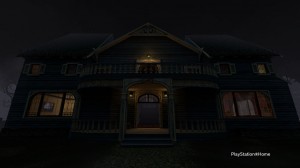 If I recall correctly, Cutteridge ended up on the top-ten sales list for its debut month. But more importantly, Juggernaut got people talking about them. Who were they? What were they about? Did they sleep in hyperbaric chambers?
If I recall correctly, Cutteridge ended up on the top-ten sales list for its debut month. But more importantly, Juggernaut got people talking about them. Who were they? What were they about? Did they sleep in hyperbaric chambers?
And – most importantly – what would they come out with next?
This, then, is the lesson for a new developer on how to build brand loyalty in a crowded marketplace: roll in a grenade and come in firing. Home’s simply got too much content coming in, all competing for the spotlight, to do less.
Shameless plug: I personally believe in this approach not only because I’ve seen it work elsewhere, but because it’s how HomeStation got on the map. No one expected a literary journal which examined Home from a sociological standpoint to succeed; after all, Home’s audience is four-fifths male and relatively young, which means that it’s a bit like trying to get an MTV fan to read The Atlantic. And no one thought we could pull off a new article every day (let alone our current two-per-day output), with minimum word counts and strict editorial standards, particularly as we were entering a very crowded and established Home community media scene with a lot of people who were publicly dead-set against us succeeding.
So we rolled in a grenade and came in firing. The rest is history. And our audience numbers are far in excess of what anyone expected.
Which brings us to our next asymmetrical marketing tactic:
6. Community management and community media.
SCEA may have its eyes on their new Digital Platforms initiative, but if you’re a developer for the Home platform, then you’re developing for a social MMO community. And that means community outreach is critical for providing a consumer perception of being overtly interested in community feedback. The Sony forum is one such outlet, and satellite community media projects are another.
Generally speaking, someone who’s so engaged with Home that they spend time on the internet reading the Sony forum or satellite media is probably someone who’s more inclined to spend some level of money in Home. We’re living in an age where, when we see something we like (such as a movie or new television show), we rush to the internet to see what everyone else thinks about it.
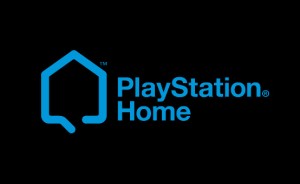 And here is where Home has a problem. Harsh though this reality is, Home isn’t on the radar of mainstream gaming media. Its first impression was poor, it was written off as a bad idea, its public beta is five years old, and the Hub – for all the vast sums of money thrown at it – didn’t do anything to fundamentally change the Home experience itself. Which means that it produced a blip on the radar of the larger gaming world. So even though it can be a profitable venture for a third-party developer to work within Home, Home itself is a niche product. Which means getting an external media source to provide publicity can be a challenge.
And here is where Home has a problem. Harsh though this reality is, Home isn’t on the radar of mainstream gaming media. Its first impression was poor, it was written off as a bad idea, its public beta is five years old, and the Hub – for all the vast sums of money thrown at it – didn’t do anything to fundamentally change the Home experience itself. Which means that it produced a blip on the radar of the larger gaming world. So even though it can be a profitable venture for a third-party developer to work within Home, Home itself is a niche product. Which means getting an external media source to provide publicity can be a challenge.
Community media, for better or for worse, does a decent job of filling that void on a continuous basis to a sufficient number of target consumers. And, to be fair, the audience penetration can be significant. AlphaZone4, for instance, is Home’s most-visited fansite in the world, boasting hundreds of thousands of unique visitors per year. That’s not an insignificant number, considering that social games usually have sharp power-law distributions (“whale economies”) and external sites can sometimes (although not always) prove to be a magnet for whale consumers.
Working with community media does present some challenges: more often than not these outlets are often in competition with each other, creating pressure to “scoop” one another, and they are often run by people with little to no entrepreneurial experience or background in working inside corporate America. Which means that a Home developer really does need a community manager to help spread brand awareness and harness a pack of loose-cannon fanboys into a cohesive PR stream.
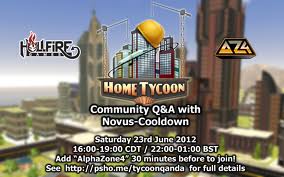 Example: nDreams is one of Home’s oldest third-party developers. In terms of brand awareness, they’re already an established player. But how much more front-of-mind are they, on a continuous basis, now that they have a community manager — Joe Dale — keeping the visibility high on a daily basis? Look at how much more coverage nDreams has received in various community media outlets since they created a specialized (and interactive) point of contact. Same goes for Lockwood, LOOT and Hellfire with Megan, Sara and Ben, respectively. We’re at a point with Home where there’s so much content coming in that it’s more or less a necessity to have a town crier. To have a public face. To have someone who can go into Home itself and hold Q&A sessions (such as the events AlphaZone4 holds) which offer carefully-planned tidbits of information to drive speculation and hype.
Example: nDreams is one of Home’s oldest third-party developers. In terms of brand awareness, they’re already an established player. But how much more front-of-mind are they, on a continuous basis, now that they have a community manager — Joe Dale — keeping the visibility high on a daily basis? Look at how much more coverage nDreams has received in various community media outlets since they created a specialized (and interactive) point of contact. Same goes for Lockwood, LOOT and Hellfire with Megan, Sara and Ben, respectively. We’re at a point with Home where there’s so much content coming in that it’s more or less a necessity to have a town crier. To have a public face. To have someone who can go into Home itself and hold Q&A sessions (such as the events AlphaZone4 holds) which offer carefully-planned tidbits of information to drive speculation and hype.
And that brings us to our final asymmetrical marketing tactic:
7. Developer diaries and preview hype.
Developing a video game or some new content for Home, if you do it on a daily basis, isn’t necessarily the most exciting job on the planet. You sit and stare at a computer screen until your eyeballs are bleeding, your deadline shouts at you like Samuel L. Jackson, and you pray to god that your loved ones will forgive you for sleeping under your desk and smelling like carpet.
Here’s the thing, though: to the legion of enthusiast consumers who gobble up every tidbit, getting any sort of behind-the-scenes glimpse is incredibly exciting.
Example. I just got back from playtesting something that’s going to show up in Home soon. Like everything else in Home, it’s made by a bunch of people sitting in front of computers, all tucked away inside a nondescript building. It’s a job, like anything else. But for me, since I don’t get to see it every day, and most people (including journalists) from the Home community don’t get invited to scope stuff out ahead of time — unless your name happens to be Cubehouse — and offer feedback which might affect the final product, it was ridiculously exciting.
There’s an audience for behind-the-scenes peeks. And if it comes directly from the developer, it’s an amazing tool for generating preview hype.
 Lockwood, in particular, is brilliant at this. Have you read their developer diaries for Mercia, Home’s first RPG? That incredible concept art, teasing a world unlike anything ever deployed into PlayStation Home? What an amazing tool for preview PR.
Lockwood, in particular, is brilliant at this. Have you read their developer diaries for Mercia, Home’s first RPG? That incredible concept art, teasing a world unlike anything ever deployed into PlayStation Home? What an amazing tool for preview PR.
And the results, of course, are plainly visible: when Home opened up its virtual E3 space, there was a playable Mercia demo. And so many people rushed to play it that it crashed the servers. You could hear them physically groaning and tipping over as Home’s population tried to get in. There was much scrambling behind the scenes to get everything shored up to handle the load, and frazzled apologies for the inconvenience.
Meanwhile, everyone ignored the obvious: that this was a bloody fantastic problem to have.
Isn’t that every Home developer’s wet dream? To have a hot commodity with so much pent-up demand that you crash servers from here to Zimbabwe when you finally crack the door open an inch? Is that not a clue that maybe you have something so awesome that even Lord British will nod sagely in approval? I mean, come on, that’s cause for celebration!
 HALLI: “So, how’s the response to the Lockwood demo in the virtual E3?”
HALLI: “So, how’s the response to the Lockwood demo in the virtual E3?”
MEGAN: “Well, we crashed Home and so many people rushed to play it that it altered the Earth’s orbital tilt around the Sun. But we’re working on fixing it!”
JOEL: “Right, fish and chips all around, then?”
I don’t mean to make light of a technical problem in Home, but come on…when you can break Home because you have something so awesome that people are frothing at the mouth to play it, you are officially Like A Boss.
Things like the virtual E3 demos and the developer diaries serve an incredibly important purpose: preview PR. And it’s really only now that Home’s various developers are starting to utilize this tool. Just as a film has preview trailers for months prior to its release, so high-profile content in Home should be teased well in advance, despite all the QA hurdles which can alter the final product. Right now, it seems like the majority of Home content is teased for a week or two prior to its release (with smaller content teased only days prior to its release), whereas anticipation really and truly can be built for a major product launch months in advance. Get the speculation rampant. Get people hunting for clues. Half the fun of a major product release is all the anticipation built up to it!
These are only some examples of asymmetric marketing in PlayStation Home. As Home continues to offer more and more content at an accelerating rate, it’s becoming increasingly important for developers to stand out from the crowd. Our hope is that we will continue to see further methods developed in the future, as the overall Home experience appears to rely more and more heavily on third-party content.


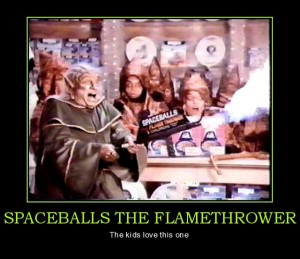
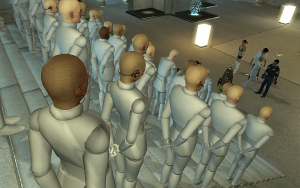


 LinkedIn
LinkedIn Twitter
Twitter
Aw, thanks for the name drop. Insightful article as always!
<3
….so which one of the nice developers is going to create an HSM bikini for all the female avatar reporters to flounce around the Hub and other public spaces in? I want to see a “…… <3s HSM" on my rump.
or my chest.
You think I am kidding? We need walking billboards in Home to let all those people who still have never heard of HSM know that we are out front with the latest and greatest.
And if it means putting my 74 year old DarthGranny body into a thong and two eyepatches, I am willing to do it.
You are a team player.
I was surprised the first time I went into a store and could not see the items in person. So the fact that developers are breaking that trend on their own seems like a common sense idea coming to fruition.
Having other developers step on your release with an announcement or a bigger release has to be a nightmare. I think Home should reduce the time that things are announced ahead. Anything announced more than a month ahead of time in Home I think has little to no effect.
I think it is important to gain customer trust. Keeping the number of bugs down is essential. And fixing them when they are found is also essential. I think the Home community has been more than cooperative in letting things go. When it is real money, the standard for developers should be high.
It is all getting better, but I think it is harder to enter into Home now, than it was even a year ago. The place is packed with good options.
Excellent analysis as alway! A great article.
I truly hope all up incomeing devleopers for PsHome, and established PsHome developers are taking notes on this article. As a PsHome user, these examples and tools stated in this article. Would truly help your products sale more. Not just to those that buy every new peice of content evey week, but also to those that are more picky with there purchases. Great article very informative. Good work NorseG
Phew! Big read there Norse! You also just gave me a great idea for my own business, so when I start seeing an increase in my personal monies I’ll add you to my list and send you that toaster from the LW Gift Machine to say thanks. I know you want one really, and it’s the least I can do. lol
Bigyama have big problems, and it’s going to be a tough climb for them if they want to reach that peak that LW, Loot and others sit on. I just hope there’s room since they do such quality stuff. Juggernaut did a trick with their estate, I think one of it’s succeeding factors was its timing; just before Halloween. Given its themed space, time of year and all the little folks who like to celebrate that holiday, it had to be a big hit. Even I thought I had my space ready for my Halloween Fancy dress competition, until I saw their estate. I spent the next couple of days re-organizing the whole event to fit around that place, and it payed off -- big time.
All you have to do to get a slight idea on what works for Home advertising is look at this article and its examples of what’s been done so far. In fact, this whole article would serve well as a How To for aspiring new Home companies. But then, given your obvious natural brilliance with business Norse, it’s hardly surprising.
Ugh! Did I just say that? *removes face from butt-area in shame*
What’s very telling is Bigyama’s recent announcement — which can be read at http://bigyama.net/blog/new-project-update/ — in which they divulge that they’re shifting the bulk of their work from Home to Vita development. Perhaps the Home commodities they released were just to get enough of a revenue stream going to move on to bigger projects on a new platform at the beginning of its life cycle and in need of content, as opposed to an old platform nearing the end of its life cycle and more or less dominated by a handful of established developers.
As long as Home’s consumer base continues to grow and Home generates sufficient returns to justify further investment in the platform, we’ll continue to see developers releasing new content for it. I wouldn’t be surprised to see numerous Home developers start shifting some of their efforts over to Vita, though, or the greater PSN; barring some sort of formal announcement from Sony that they intend to support Home for the long term and somehow migrate it to the next console generation when the time comes, I suspect Bigyama’s announcement is merely the first of many more to come.
I think you have once again hit the nail on the proverbial head Norse. All of these are great examples of what works to generate sales in Home. The newest one for Sony of course is the prerelease of stuff a week ahead of time in the X7 area. While that is okay, it limits the availability to the masses and may even alienate some because they can’t afford the entry tag.
The Lockwood Showcase is a smart one as is the new Loot one, and Juggernaut has been doing this right since they started as you pointed out.
Another way for a new developer to get a foothold in Homes burgeoning economy is to listen to what the community feels is lacking and fill that gap. This is already being done by the big guns. There are still many commodities that are sorely lacking in Home and would help fill someones coffers quite quickly if implemented, thereby giving them more money to spend on implementing some of the tactics you have mentioned. Look for those commodities and do it! One I can mention and have mentioned many times is long separate skirts, that are made right so they mix and match without blending into the different tops you put them with. That is but one example, but you put a series of those out and I think it might even make the top ten list.
Let’s start with Home’s fundamental problem: Getting people to spend money. There is a very high level of resistance to buying virtual items from first-time users, and this isn’t limited to any one demographic group.
A user has to have a time investment in Home, as well as some assurance that their interest will continue, before they’re ever going to consider cracking their virtual wallet open. Customer acquisition is so much more difficult in this environment, and it’s one of the reasons why games perform as well as they do. People can grasp the concept of buying a game, or paying to play a game, much more easily than they can grasp the concept of buying new clothes for an avatar.
Take a look at the Top 10 over the last 12 months…the recurring theme is that items unique to Home and tied to game spaces wildly outperform everything else. Home users want Home content. This should play into developers’ favor.
But then we get to the second major problem: The lack of a central source for information. A few sentences in a single post on the PlayStation Blog, no matter how visible, doesn’t set the stage for long-term success.
Home’s whales have a week to make a decision on content before the next batch of shiny things arrives, often with no more information than a brief blog description, a few seconds in a Virtual Item Showcase video and some comments on the PSN Forums, if they actually use them. Older content disappears into the labyrinth of the stores, where it can be impossible to find.
So you’ve got seven days (five, really, Wednesday through Sunday) to make your content sell before the biggest spenders move on to the next wave of content. If something really big happens to hit during your seven-day cycle, you’re even further down the hole.
It doesn’t help that the nature of nearly all Home marketing and media coverage is reactionary. A dozen sites with their own limited and loyal audiences all scramble to be the first out of the gates with their videos and stories. This is a ripe environment for misinformation (a danger that HSM deftly avoids) and for things to fall through the cracks.
In terms of much of the generated content, it boils down to what a thing is, rather than why it’s worth a customer’s money. A few sources do a great job of providing that context, but in a realm of reactive content development, by the time those articles see the light of day, we’re often into the next publishing cycle.
Add in some other risks…too much content of a similar type or style in a given period, an established developer launching a new upgrade to one of their popular games…and you’ve got a very tough marketing challenge.
I see three ways to fix this, and I disagree with Deuce_for2’s views in one of them. This is rare. Generally he’s right on the money.
1. More support from Sony itself.
Every new developer should get a kiosk in The Hub or The Mall that showcases some of their content in 3D for at least a month. Too expensive? Every new developer should get their own post in the PlayStation Blog to fully introduce themselves, accompanied by a developer-produced video of their content. That’s a minimum for establishing them on a solid footing.
At the same time, the store needs to be reorganized. Drop the Mall categories under the Shopping tab and organize by developer. This will dramatically reduce the clutter under Furniture, Costumes and Threads and provide a shorter path to each developer’s content. Keep the organization as it is for the actual Mall stores, for those who want to browse.
2. Promote early.
Get the web site, Twitter feed and Facebook page up at least three months before the content goes live. Introduce yourself. Tease the content. Ask for input. Build a relationship with the community long before the content is due to arrive, and there will be heightened interest when the official blog announcement is made. Be as specific as you possibly can be about what’s coming, what it does and what it costs. Talk about why you decided to develop this content, what influenced it and where it fits in your larger plans for Home. Put together teaser videos for the really unique stuff, so that people can see it.
One of the big reasons why Granzella has so many followers in NA is the advance publicity that users generate by discussing its content in JP, which can take six months or more to appear in NA. By the time it gets here, people have heard so much about it, and know so much about it, that they want to buy it. This proves the benefits of advance information.
Home marketing right now is the equivalent of a pitchman pulling a veil off a box and yelling, “You must buy this!” It works on those with loose wallets, but most of your customers want to know what’s in the box.
3. Create context.
It’s a given that not every item is going to appeal to everyone, so define who the item is made for and where it fits in the larger Home context. Loot has done this exceptionally well with its machinima tools and stage sets. All of these items work together for those who want to create videos, and the E.O.D. and active cameras provide the means to produce and share content within Home itself.
A few developers have this built in to their approach, like Lockwood, Hellfire and Granzella. For new developers, looking at what’s popular and filling the voids could be a quick path to success. Everyone’s hanging out at the beach? Make some really cool beach wear, or a range of wicker furniture for the beach-themed personal spaces.
The other option, of course, is to go big. Build your own world within Home, update it regularly and link everything together. That’s probably more than a new developer can or wants to do.
My historical spending on Home is looking like a bell-curve right about now. As you stated, it took a feeling-out process a few years ago before deciding to spend anything. My Home expenditures probably peaked a couple years ago and seem to be at a trickle lately.
At one time, I was craving new virtual items to purchase even though I’m sure that I showed more restraint than many. Nonetheless, I purchased a fair amount of content for a while but my interest in buying more has rapidly declined. I don’t really feel the need for more virtual clothing or personal spaces unless something very special comes along. The marketing tactics of Sony and the 3rd party devs are pretty much lost on me at this point.
It’s probably a good thing for me that all of this content did not exist in 2010. Home could have become an expensive proposition for me. My SCEA account for this year shows that I’ve spent $27, including the Wild West Saloon for $7 and a bunch of Midway green tickets. Beyond that, I’ve spent less than $10 in 2012. And all of that has been done with complimentary SEN vouchers so, in actuality, I’ve spent nothing on my SCEA account this year. Maybe a couple thousand yen in Japan but only because the funds were already in my wallet there. My EU account has had funds in the wallet for several months that have barely been touched.
With the Mall content expanding at such an exponential rate, I just don’t bother trying to keep up anymore. I mostly just socialise and collect free rewards these days.
I like the idea of using 3D content to showcase new Mall items. The LOOT single-purchase interface currently in the Stage Set open house would be perfect for this. I’m hoping they are tuning the code for eventual use in the Mall.
Home could also copy the strategy used by Amazon.com (and indeed many online sellers) — Artificial Intelligence. Amazon regularly pulls me in with its “People who bought this also bought…” suggestions. Are you buying a bathing suit? There should be a simple way to “see more beachwear”, or “see beach-themed furniture.”
There should also be a way to search on item names or keywords. Enter “red women’s shirt” (or select from pulldowns for color, gender, and item) to see what’s available, regardless of developer. This would go far to solve the problem of seeing an interesting item in Home, but not knowing where to find it. (For that matter, a keyword search option in the Wardrobe or Inventory could be really, really useful.)
From time to time I suggest that Home add a Retro Store to the Mall — a place to showcase older content on a rotating basis. Items there could be offered at a discount, for additional incentive.
It does seem that, for a platform that depends on separating us from our money, Home uses remarkably little savvy in its marketing techniques.
Ok, Where do i download my “Home assymetric marketing” Diploma? )
)
jk…
Great article. I may be a burned out commies but I love learning or reading about marketing. Tells you a lot on the human nature. In this days and ages, I think marketing should be taught starting in elementary school alongside mathematics and french. (oops, sorry i mean english
Keep your fire hose ready Norse, i feel thirsty!
I want to know when VeeMee will fix the connection ,lag problems in game. Also when new maps ect. Are planned. addicted to this game now lol. Damn $50 armor I love it…